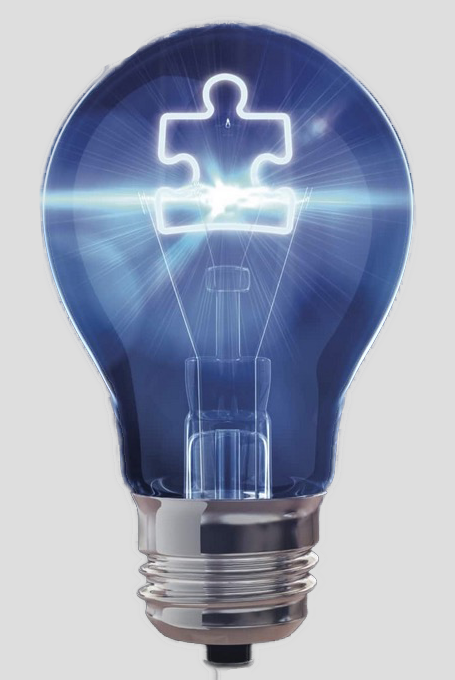Heather Ainsley: news@greenepublishing.com
Beginning Saturday, April 2, the world turned blue in honor of World Autism Awareness. Both children and adults with autism are especially susceptible to mood changes due to lighting, and studies have shown that lights with mellow colors, like blue, can help an individual relax and become creative. Many communities "light it up blue" to show recognition and solidarity towards people with autism in their communities. To participate, businesses and residents put out blue lights, décor or ribbons around their workplace or houses to show their support. We here at Greene Publishing, Inc. invite the community to participate in Light It Up Blue, showing acceptance and support for those with autism. As with any awareness movement, shining colors alone doesn't add up to much, so if you do decide to light it up blue, also consider donating to a reputable support organization and furthering your understanding of what autism actually is.
Autism, or Autism Spectrum Disorder (ASD) is a developmental difference that can cause significant social, communication and behavioral challenges. People with autism may look like anyone else, but may communicate, interact and learn in ways that are very different. This disorder looks different for different people and can manifest itself in a variety of ways. Because autism is often an invisible condition, it is important to bring awareness to the ways that it can impact behavior, which can bring a level of understanding and acceptance to people and families who live with it.
As autism is a mental condition, and no two minds are the same, it has a vast range of ways that it can affect the people who have it, and people who are autistic are commonly referred to as being somewhere "on the autism spectrum." In light of the spectrum of symptoms that come with autism, there is a spectrum of symbols used to spread awareness and acceptance. Here are the symbols to keep an eye out for:
The rainbow spectrum: Closely tied to the concept of the autism spectrum, a range of colors on the rainbow have often been used as a visual representation of the wide scope of autism symptoms. It is also symbolic of how individuals with autism can have significantly different ranges of abilities and challenges. The rainbow colors are often paired with a puzzle piece shape, the infinity symbol or a ribbon.
The puzzle piece: Commonly paired with the color blue or a rainbow spectrum, a puzzle piece is often used as a symbol for autism awareness, although this symbol has been met with both positive and negative response. On the positive side, many family members of people with autism can relate to it being a "puzzling" condition, with not a lot of clear-cut answers. Additionally, some people with autism can relate to the feeling of being set apart, as they may struggle to "fit in" to society social norms. On the negative side, some suggest that a puzzle piece as a direct symbol for autism creates an assumption throughout society that all people who have autism are synonymous with "not fitting in" or "being set apart," leading to an unnecessary and harmful stigma around neurodivergent members of the community.
The butterfly: A relatively new symbol for autism, the butterfly has emerged as a possible alternative to the more-controversial puzzle piece symbol, as it suggests change, and embodies a symbol of diversity and continued development. Many consider it to be a symbol that encourages the beauty of a different perspective and the importance of continuous growth.
The infinity loop: Another new alternative to the puzzle piece symbol, the infinity loop is intended to inspire inclusivity for people on the autism spectrum. It is often paired with a solid color or a rainbow.
While these symbols represent autism, awareness is just the first step. The most important way you can spread awareness and acceptance for those with autism is to listen to autistic voices, and seek education and understanding about what it is like living on the spectrum, and how you can help by contributing to good autistic advocacy organizations, such as Autistic Self Advocacy Network, Autistic Inclusive Meets, the Autistic Women and Nonbinary Network and Autistics for Autistics. When looking for a positive organization to support, keep in mind to look for organizations that have autistic members, and that do not present autism as something that is wrong or undesirable, but as something that should be understood and accepted. Most of the funding of a positive autism organization should be geared towards services that benefit autistic people, such as education, communication, housing, healthcare and the advocacy itself, rather than finding a "cure" for autism. “As a parent and SPED teacher, the one thing I would like to bring awareness to regarding Autism, or any disability for that matter, is acceptance and kindness. I come across so many neurotypical students who struggle with this and bully others simply because they are different. Education starts at home. That being said, I encourage each of you to speak to the young ones in your life and teach them that it's okay to be different and to always be kind and accepting of others,” states Madison resident Leslie McLeod.
So, Madison, show your acceptance and support by seeking education on autism, listening to autistic voices and lighting it up blue! And remember, acceptance isn't just an April thing. You can be accepting any time of the year.

